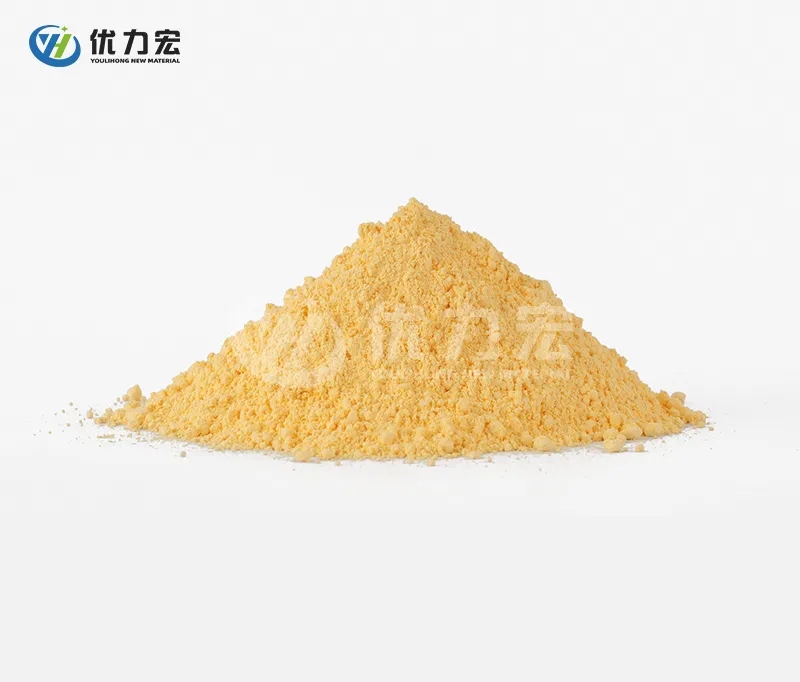Composite foaming agents play a crucial role in various industries by enhancing the properties of materials, particularly in applications involving soft PVC products. These agents are essential for creating lightweight, durable, and thermally efficient materials. At Youlihong, we specialize in high-quality composite foaming agents like AH-613, designed to meet the specific needs of our clients. This blog will explore the key components and functions of composite foaming agents, their applications, and the advantages they offer.

What is a Composite Foaming Agent?
A composite foaming agent is a substance that generates gas when heated or chemically reacted, resulting in the formation of a foam structure within a material. These agents are widely used in various applications, including plastics, rubber, and construction materials. The primary purpose of a foaming agent is to reduce the density of the final product while maintaining its structural integrity.
Key Components of Composite Foaming Agents
1. Active Ingredients: The active components of a foaming agent are responsible for gas generation during decomposition. For example, AH-613 contains specific compounds that release gas when heated, creating bubbles within the material.
2. Stabilizers: These additives help maintain the foam structure by preventing premature collapse of the bubbles formed during the foaming process. Stabilizers ensure that the foam remains intact until it solidifies.
3. Fillers: Some composite foaming agents may include fillers to enhance specific properties such as thermal insulation or mechanical strength. Fillers can also help reduce production costs.
4. Surfactants: Surfactants improve the dispersion of the foaming agent within the base material, ensuring uniform distribution and consistent foaming.
Functions of Composite Foaming Agents
1. Gas Generation
The primary function of composite foaming agents is to generate gas during processing. For instance, AH-613 has a gas yield of 180-220 ml/g and decomposes at temperatures between 150°C and 160°C. This gas generation creates a cellular structure within the material, reducing its density.
2. Thermal Stability
Composite foaming agents need to be thermally stable during processing to ensure that they do not decompose prematurely. AH-613 is designed to provide a controlled release of gas, allowing for effective foaming without compromising material integrity.
3. Enhanced Mechanical Properties
By incorporating a foaming agent into materials like soft PVC, manufacturers can achieve improved mechanical properties such as tensile strength and impact resistance. The cellular structure created by the foaming agent contributes to these enhancements.
4. Improved Insulation
Foamed materials often exhibit better thermal insulation properties compared to their solid counterparts. This characteristic is particularly beneficial in applications where temperature control is critical.
5. Surface Quality
Composite foaming agents can contribute to better surface finishes on products. For example, AH-613 allows for smooth and clean surfaces with a perfect bubble structure, enhancing the aesthetic appeal of finished products.
Applications of Composite Foaming Agents
Composite foaming agents find extensive use in various industries:
1. Construction: Used in insulation materials and lightweight concrete products.
2. Automotive: Applied in interior components for weight reduction and sound insulation.
3. Packaging: Employed in protective packaging materials that require cushioning.
4. Consumer Goods: Utilized in items like toys, furniture, and household appliances.
5. Medical Devices: Incorporated into products requiring lightweight yet durable materials.
Advantages of Using Composite Foaming Agents
1. Environmental Compliance: Many composite foaming agents, including AH-613, conform to EU environmental protection standards, making them suitable for eco-friendly applications.
2. Cost Efficiency: By reducing material density without sacrificing performance, manufacturers can lower production costs while maintaining product quality.
3. Versatility: Composite foaming agents can be tailored for various applications by adjusting their formulation to meet specific requirements.
4. Ease of Use: AH-613 is easy to incorporate into existing manufacturing processes without requiring significant changes to equipment or procedures.
5. Stable Performance: With good qualitative analysis and low density characteristics, composite foaming agents ensure consistent performance across different production batches.
Packaging and Storage
AH-613 composite foaming agent is packaged in compound bags weighing 25 kg each, ensuring easy handling and transportation. It should be stored in a cool and dry warehouse away from fire sources and moisture to maintain its effectiveness.
Conclusion
Composite foaming agents like AH-613 are essential components in modern manufacturing processes that enhance material properties while promoting sustainability and cost-effectiveness. At Youlihong, we are dedicated to providing high-quality composite foaming agents tailored to meet your specific needs.
If you are interested in learning more about our products or how they can benefit your applications, please reach out! Together, we can explore innovative solutions that enhance your product offerings and drive success in your industry.


